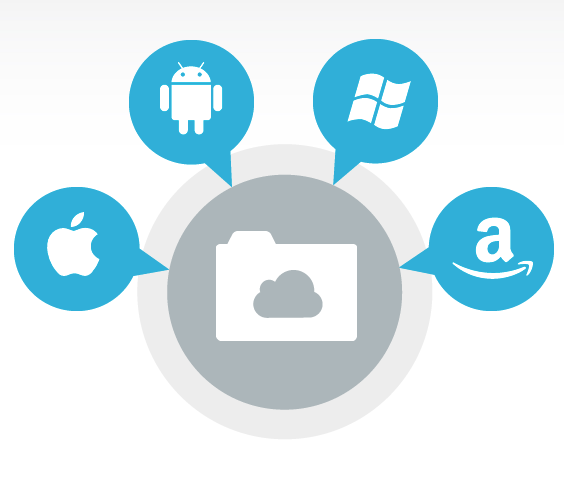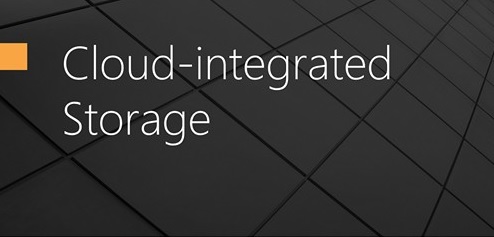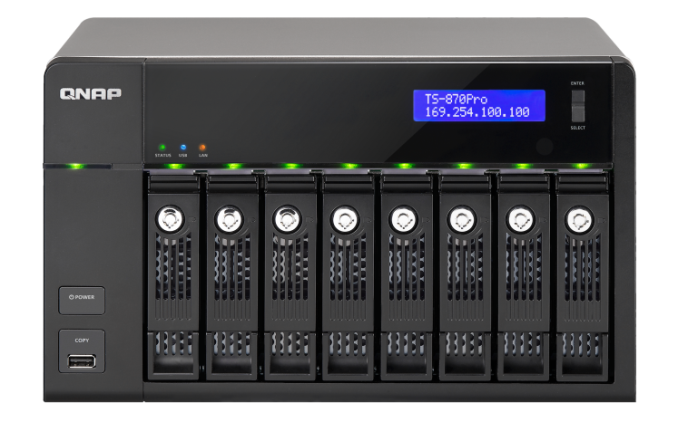Averting Disaster - A Guide To Computer Backups (2014)
by Brett Howse on May 21, 2014 9:00 AM EST- Posted in
- IT Computing
- Mac
- Apple
- Windows
- Cloud Computing
- macOS
Built-in Tools Faults
All of the built-in backup tools are a great method to locally backup your computer. They are all fairly easy to set up and use, but they all have their faults.
The Windows tools are chock full of artificial limitations. Windows 7’s lack of network backups for home versions of the software is a major limitation with the low cost of network storage. Windows 8 fixes that issue, but creates new ones by no longer allowing automated image backups and not allowing backups of any files outside of the libraries and OneDrive folders.
Apple’s Time Machine is likely the best built-in utility of the bunch, but even it has some limitations. There are no advanced options at all, other than to exclude files or folders, so you can’t tailor the backups to work the way you want, and Time Machine, like the built-in utilities from Microsoft, doesn’t offer the more sophisticated abilities of dedicated backup systems. Also, none of the built-in solutions offer the ability to backup a network share, so if you have network storage to allow multiple devices to access your data, you’ll need a 3rd party backup solution.
And most importantly, none of the built-in solutions will perform automatic offsite backups.
Advanced Backup Approaches
If you are just backing up a single PC and your main backup goal is redundancy to recover from a system failure or file deletion, all of the built-in backup tools will do the job. Their main goal is to allow you to get your files back if the machine quits, or a file is overwritten by accident. External hard drives are excellent for this task as well as inexpensive so don’t feel like you are not doing a good enough job if you stop there. Any backup is far better than no backup, and for the majority of instances, local backups to an external hard drive or NAS are all you will need.
There are going to be scenarios though where the built-in backup tools are not enough though. Any local backup is susceptible to a few situations that none of us want to think about, but unfortunately do happen. Theft is probably the most common way to lose your local backups. If your home is broken into, and a shady character steals your PC or laptop, they will also likely take your external hard drive as well. If you are backed up to a NAS, you are probably a bit more safe assuming it’s not in an obvious locations such as running on your computer desk, but there’s no guarantee even with a hidden NAS that it won’t be taken as well. And moving up the list in possible calamities, fire, flood, earthquake, or even a simple power surge can be a way to render your local backups useless.
The solution to losing local backups is also performing off-site backups, and the solution to off-site backups for most users is cloud storage. It’s certainly possible to perform off-site backups without utilizing the cloud, but for most users I would recommend a Hybrid approach with the cloud as the off-site archive.
Hybrid backups combine both local backups, for fast backups and restores, with off-site storage for disaster recovery. There are likely an infinite number of ways to achieve this, so I will go over a couple of different methods. Hybrid backups will be more expensive than choosing one solution or the other, so first we’ll look at just backing up online.
Option 1 - Cloud backup
Cloud backups are solutions which back up your data to a server, or servers on the internet. There are many vendors of online backup solutions now, and all of them offer different price points, redundancy levels, available storage, and other features. Some of them backup to their own services, and others are a portal to allow you to choose your own online storage from services like Amazon S3, Rackspace, Microsoft Azure, and others. Some services offer unlimited backups of one PC, while others tier the pricing to the amount of available backup storage. Several offer the ability to also backup one or more network shares. Some offer the ability to seed your initial backup by sending you an external hard drive which is very handy for scenarios where your upload speed is not very fast, or if you have a large amount of data you’d like to keep safe. Here is a list of several vendors offering their own take on cloud backups:
Of course this list is certainly not exhaustive, with many companies now offering online backup solutions. A quick search in your favorite search engine will provide dozens of options. Be sure to choose the one that works best for you.
Keep in mind that your data may or may not be encrypted at rest with online backup solutions depending on the provider. If you are backing up business data to the cloud, be sure to verify the terms and SLA of the service for legal reasons. For personal data, it is unlikely there will be any legal ramifications to storing family photos in the cloud, but for privacy reasons, be sure to read over the terms carefully.
Pros of Cloud Backup:
- Increased protection from loss of personal property due to theft or natural disaster.
- Ability to get to your backups from any internet connected PC.
Cons of Cloud Backup:
- Can be slow to create the initial backup.
- Backing up many large files may require a faster internet connection.
- Unable to backup and restore system images quickly.
- File restores for major file loss much slower than local backups.
- Recurring costs of online storage.
- May be limits on file sizes that can be backed up, or have total backup size limitations.
Let's take a look at one of the more popular cloud backup solutions to see what it offers: Crashplan
Crashplan is a cloud solution with a lot of good qualities. The free version allows you to use it as your local backup to a locally attached drive (no supported backups to NAS), as well as backup to other computers running Crashplan – even if they are somewhere else on the internet. Crashplan also has clients for Windows, OS X, and Linux which is excellent.
The free version allows one backup per day, but you can choose the files you want to backup from anything local on the PC including external drives.
The paid version increases the backup frequency from daily to every minute if you choose, to give you more protection and versioning as you are working on your files. Also, you gain access to the Crashplan cloud storage with unlimited space, and they also have a family tier to allow backups of 2-10 computers. You can also seed the data to the cloud with the paid version.
Crashplan doesn’t do any sort of image based backups though, so it doesn’t outright replace the built-in backup utilities. Having a known good system image is always useful. It can’t backup to a NAS, nor can it backup shared folders on a NAS. You also can’t choose your cloud storage provider with Crashplan like some of the others, so if you’d rather buy your storage from Amazon S3 or Azure, this isn’t the product for you.
Option 2 - Built-in+
I’ll call this method Built-in+ because it leverages the built-in backup utilities we’ve already discussed to perform the local backup. The default backup clients have some advantages especially with the cost to implement, so it’s a good starting point.
Simply add a cloud backup service in addition to the built-in backup tools, and you’ve now got a hybrid approach. This will likely be the most cost effective way of achieving a hybrid backup.
This method of backing up your files should cover you for pretty much any scenario.
Pros of Built-in+
- Local backups for fast recovery.
- Off-site backups for Disaster Recovery.
- Inexpensive.
- Ease of use of built-in backups combined with off-site storage.
- Ability to backup and restore system images quickly.
Cons of Built-in+
- Two backup systems are not integrated.
- Built-in backup utilities are not full featured.
- Recurring costs of online storage.
- Windows 8 does not do automated system image backups.
Option 3 - NAS Backup
We’ve discussed backing up one or more of your PCs using the built in software to a NAS. It’s a great option because network storage is relatively inexpensive now, with two bay devices for home use less than $200 including drives.
But what if you are using your NAS as more than a backup target? Network shares are extremely useful in any scenario, with the ability to access your data from multiple devices on your network, as well as offering large amounts of storage that many modern computers lack due to the surge in SSD equipped devices. Many NAS vendors offer additional services and plugins for their devices to allow them to perform many tasks. The data on your NAS is likely just as important as the data on your PC or Mac, so you need to treat it the same way and back it up.
One way that a NAS can protect itself from data loss is with RAID. We’ve already discussed how RAID is not a form of backup at all though, and is just a form of redundancy. You can’t use RAID as a backup. That doesn’t mean it’s not useful, it just has a different purpose which is to keep the unit operating if you lose a hard disk. It doesn’t protect against file deletion, file overwriting, or data corruption from a system issue or even a virus.
If I was using any two bay NAS for important data, I would certainly use it in RAID 1 rather than RAID 0 or JBOD (Just a bunch of disks which appear as a single pool), but never trust it as a backup.
I think I’ve stressed that enough, so it’s time to look at solutions to backing up a NAS.
Luckily, the concepts are exactly the same as backing up a PC or Mac, but unfortunately every NAS vendor will have their own version of backup with unique features and limitations. I can’t go into specifics for each model out there, but this is a general overview.
Some NAS devices will allow local backups to an external hard drive or even another NAS. Depending on the model, they may have a backup GUI, or they may rely on a file copy job using rsync or similar file copy tools. This is your local backup option.
You can even have a multi-bay NAS backup to itself by not implementing RAID and creating separate shares on each disk, with one as a backup for the other.
Offsite storage in addition to local backups is an even better solution, just like with your PC or Mac. Most NAS vendors now offer support for some type of cloud based storage. Your choices will be much more limited than with a full computer, but there should be a choice. Here are some links to popular NAS brands and their backup offerings:
QNAP: http://www.qnap.com/en/index.php?lang=en&sn=1844
Synology: http://www.synology.com/en-global/dsm/app_packages/Backup
Netgear: http://www.readynas.com/?page_id=942/
Asustor: http://www.asustor.com/admv2?lan=en&type=2&subject=4&sub=13&lan=en#content
Thecus: http://www.thecus.com/media_news_page.php?NEWS_ID=4447
Buffalo: http://www.buffalotech.com/resource-center/nas-system (note - no cloud backup listed)
Western Digital: http://www.wdc.com/en/products/products.aspx?id=1200
As always, depending on your personal needs and budget your backup can be either local, cloud, or a hybrid approach utilizing both local and cloud backups. With a NAS in RAID 1, you may feel more comfortable not having the local backup and just going with a cloud backup because the risk of losing the entire system due to a drive failure is lower, or you may opt to just go with local backups due to the need for fast recovery or if you have a very large amount of data to protect which may get cost prohibitive if backing up to the cloud. The best option is always the hybrid option, but it may not be attainable for all people.













133 Comments
View All Comments
Brett Howse - Wednesday, May 21, 2014 - link
Backing up 6 TB is not an issue unless you modify all 6 TB between each backup, and even then it's really not a big deal. You can stand up 6 TB of network storage for not very much money.It all comes down to whether or not the data is important to you.
Gigaplex - Wednesday, May 21, 2014 - link
Backing up 6TB is most definitely an issue. Local backups require several hundred dollars worth of additional hardware (closing in on $1000 depending on the type of NAS). Off site is even harder, cloud backup isn't even an option so you need some kind of sneakernet.Brett Howse - Wednesday, May 21, 2014 - link
Gigaplex, what I'm saying is that it's not very difficult to achieve this. If you have 6 TB of data that's worth backing up, then I assume that data's worth the couple hundred dollars in hardware required to back it up.Once you move into this kind of data storage requirement, obviously cloud backup is going to get expensive, but there are other options.
You just have to decide if it's worth backing up, or perhaps a subset of the data is worth backing up.
Before you can dismiss any backup, all you have to do is decide how much the data is worth to you.
kamiyo - Wednesday, May 21, 2014 - link
There's SyncBack which has multiple levels of features, the lowest being free. I guess it's technically not a backup solution, but more of a backup helper, but it allows you to schedule and backup specific files/folders (or whole drives) and much more. It was recommended by a friendImpulses - Wednesday, May 21, 2014 - link
SyncBack and MS SyncToy are both decent freeware options for the simpler backup jobs.SeanFL - Friday, May 23, 2014 - link
SyncToy did not scale well to a hundred thousand picture files I had years ago...it starting creeping extremely slow even on incremental backups. Maybe there was some improvement somewhere? Didn't see any new version last time I looked.dstarr3 - Wednesday, May 21, 2014 - link
I swear by SyncBack. It's a ridiculously simple way to manage file backups on an external drive.BeethovensCat - Sunday, May 25, 2014 - link
SyncToy has been reliable for me. But lately I have shifted to FreeFileSync for syncs to my external HDDs. Seems to be faster and work better (sometimes the total file sizes on my internal backup drive and the external HDD differed with SyncToy - set to Echo - never figured out why). I have confidential work files on my external HDD (WD Passports) so I encrypt everything with TrueCrypt. Can afford to loose a HDD, but wouldn't like the data to end up in the wrong hands.hasseb64 - Wednesday, May 21, 2014 - link
For nonprofessionals: Avoid RAID!BeethovensCat - Sunday, May 25, 2014 - link
Not so sure that is true. I have 'played' with RAID 0 for the last ten years and never (fingers crossed) had an array fail. Neither HDD or SSD. I try to run Syncs 2-3 times per week to avoid data loss should it happen. Am using the in-built Intel RAID controllers on Asus motherboards. Seems to be very reliable.